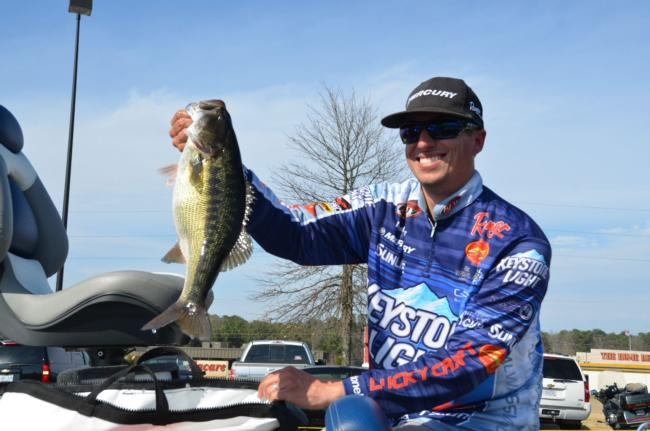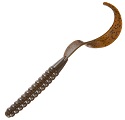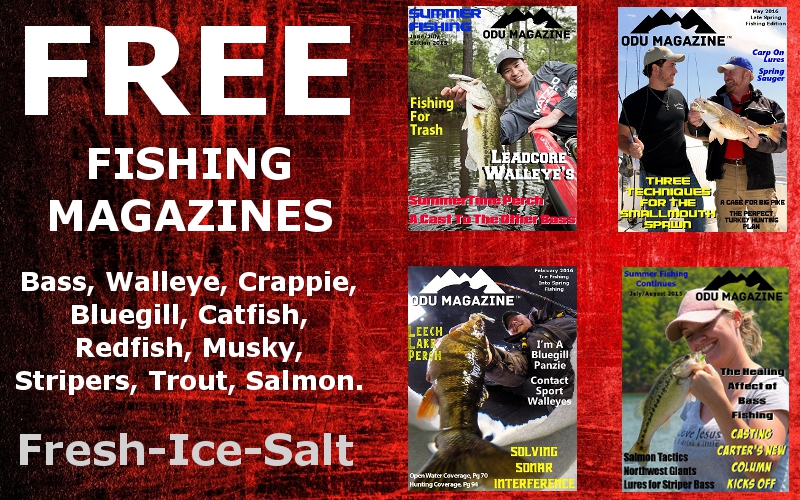 In my career as an outdoor journalist I’ve interviewed hundreds of professional anglers about dozens of subjects. When the conversation turns to soft plastics, one topic consistently arises: color. When it comes to plastic worm fishing, I’d bet my last dollar that they’re likely to list their favorites—in no particular order— as green pumpkin, watermelon, and black/blue.
In my career as an outdoor journalist I’ve interviewed hundreds of professional anglers about dozens of subjects. When the conversation turns to soft plastics, one topic consistently arises: color. When it comes to plastic worm fishing, I’d bet my last dollar that they’re likely to list their favorites—in no particular order— as green pumpkin, watermelon, and black/blue.
Well, a few of them might stray a bit and substitute watermelon candy for straight watermelon. Or they might swap green pumpkin with red flake for regular old “G.P.” But that’s as far out on a limb as they’re going, at least for public consumption.
They’re all liars, or at least practiced at the art of deception. They have 80 mile-per-hour boats, but the extra hundred pounds of tackle they carry drops them down to the mid-70s. The pros may use those three shades—or variants thereof—for the vast majority of their worm fishing, but if you think that’s all they carry, you are sorely mistaken.
 Here are four plastic worm colors in-the-know anglers don’t go on the road without:
Here are four plastic worm colors in-the-know anglers don’t go on the road without:
1. Morning Dawn
At the 2010 Forrest Wood Cup on Lake Lanier, most of the top finishers—including eventual winner Kevin Hawk—used this worm color to amass their catches. It’s hardly a masculine shade. These purple-pink weenie worms don’t represent anything found in nature—except perhaps your daughter’s fairy wand that’s STILL laying in the yard.
When it comes to bringing big bags to the scales, however, it can pay to leave your pride on the bank and drop this color into the depths. Largemouths, spots, and smallies gobble it up—especially in deep, clear water.
2. Bama Bug
Do you use Junebug, a standard in tidal water and tannic waterways? How about green pumpkin, perhaps the most popular color anywhere that bass swim? If you can’t decide between them, go with a combo of the two, dark on top, green on the bottom.
Brent Ehrler used it in a finesse worm to win the FLW Championship on Logan Martin in 2006. It’s not just deadly in rivers or ‘Bama waters. Back then, it was still a secret, available in just a limited number of styles. Now you can use it in everything from finesse baits to your favorite grass-bombing creature.
3. Okeechobee Craw

Like Bama Bug, this one is a Reese’s Peanut Butter Cup in plastic—two delicious flavors that taste great together. In this case it’s a melding of blue and dark watermelon. We’re not quite clear what it resembles. Perhaps it’s disguised as a gaudy, nest-robbing, male bluegill? Maybe it’s a molting craw?
Whatever it is, bass hate it—in the best possible way. Pitch a worm or beaver-style bait in this shade into a likely spot and prepare to get your arm broken.
4. Baby Bass
Bass are about the most opportunistic feeders in nature, and if you’ve fished long enough you’ve probably come across a three-pounder with a two-pounder stuck headfirst in its throat. We’re not here to judge—just to catch fish.
There’s something about a wriggling, injured, baby bass that is like candy to big mama. You can get it in hard baits, but a worm, fluke, or swimbait in baby bass is deadly at times—especially in the months after the spawn.
Try these colors the next time your old standbys aren’t doing the trick. You might be surprised how quickly they make their way onto your list of favorites–even if you’ll never admit it.
Pete Robbins: Veteran outdoor writer Pete Robbins writes primarily about bass fishing for a wide variety of magazines and websites. He has provided on-the-water tournament coverage for every Bassmaster Classic since 2010, and has been known to bring bad weather with him to venues that have not previously experienced any. He’s blogged for Gary Yamamoto’s Inside Line since 2008, where he explores issues related to fishing, food and popular culture, with a particular interest in the intersection of those three seemingly unrelated topics. He has not yet been featured on “Hoarders,” although his tackle collection is beyond extensive, with a particular focus on rare Japanese hard baits.
Pete calls the Potomac River his home water, but has made multiple trips to the Amazon in search of peacock bass, and tries to make at least one trip per year to Mexico to chase big largemouths and drink margaritas.
He lives in Vienna, Virginia with his wife Hanna and their precocious Australian Shepherd Rooster, who has been known to herd small animals and children.

